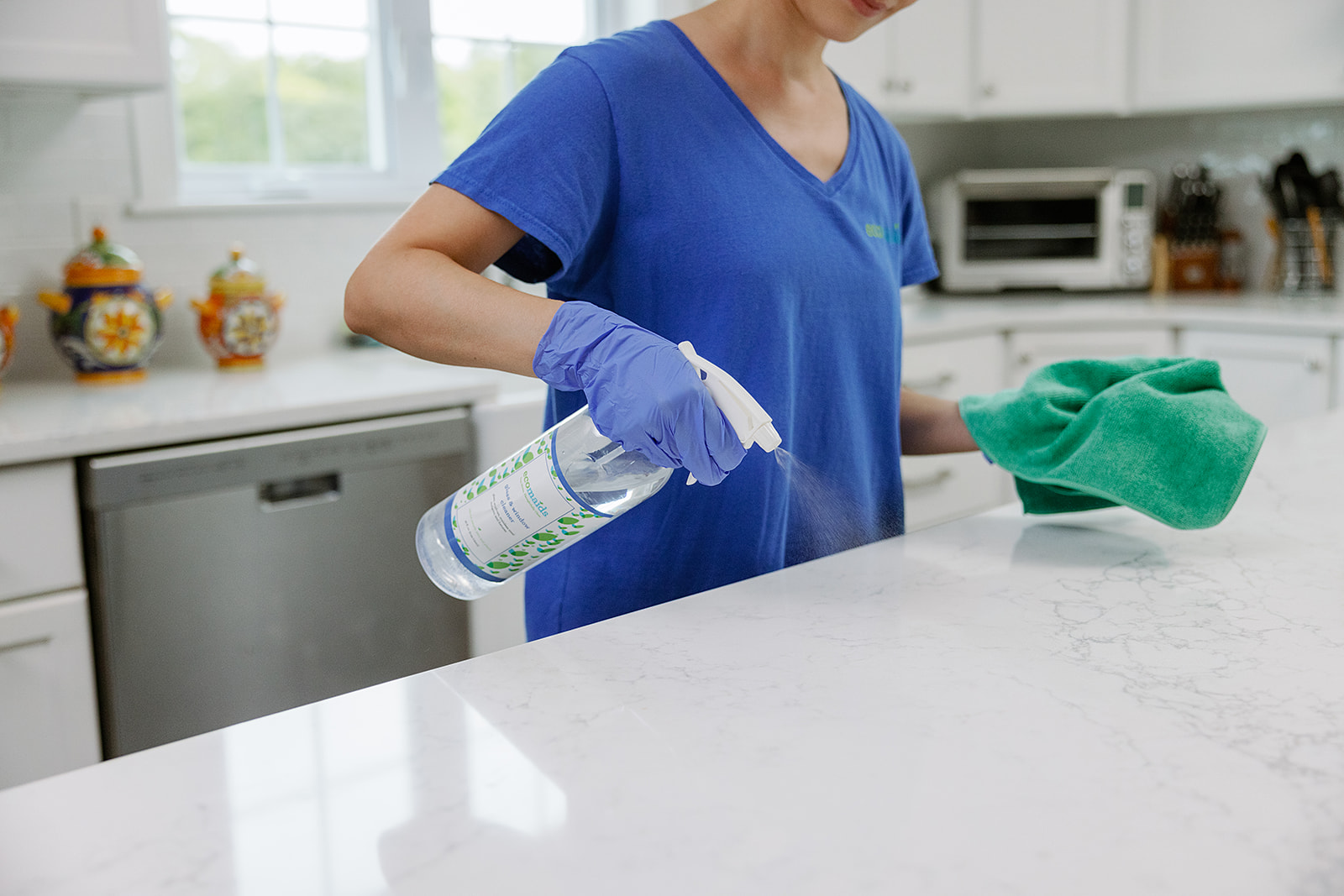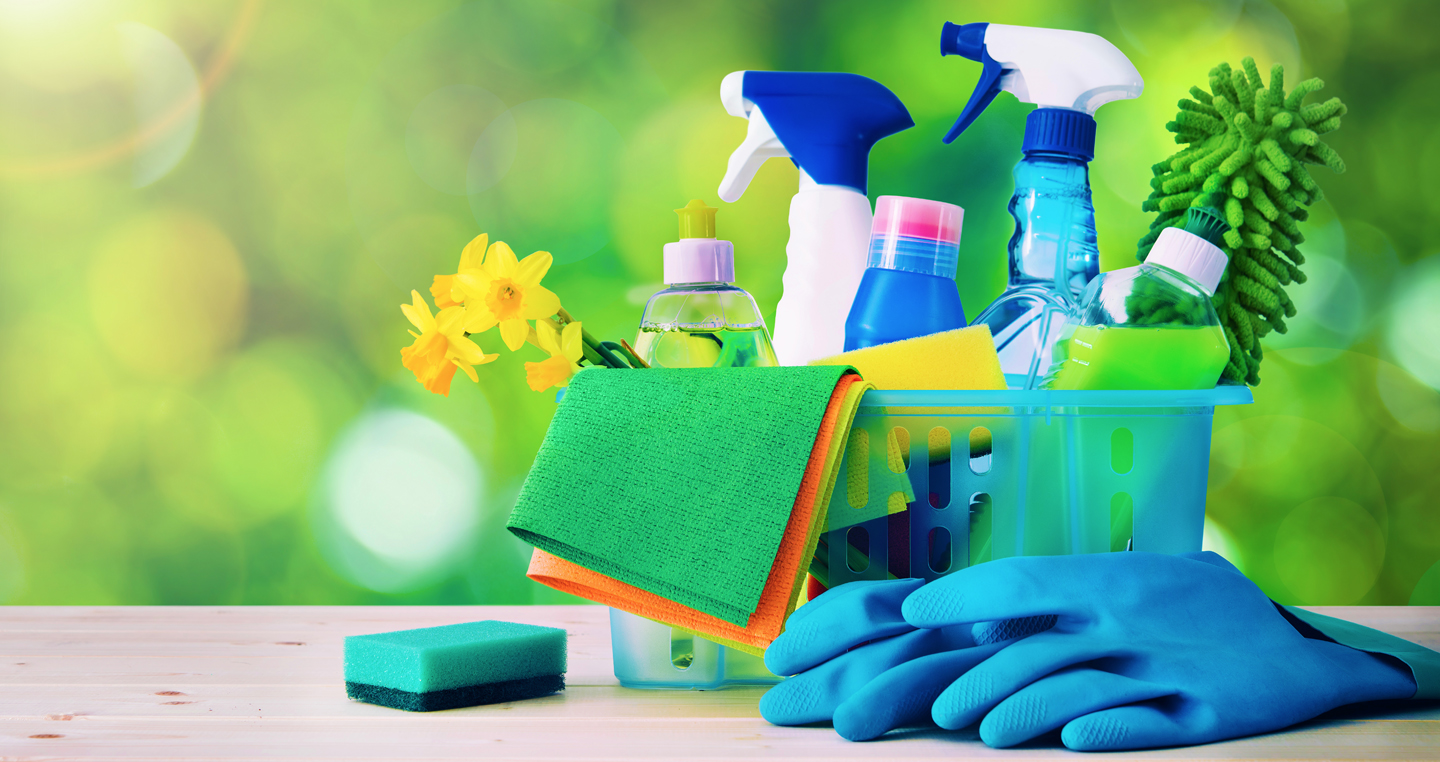Comprehending the Need for Completely Disinfecting and Disinfecting Regularly Touched Surfaces in High-Traffic Areas
In the world of public health and wellness and security, the precise sanitation and sanitization of regularly touched surface areas in high-traffic locations stand as paramount steps in stopping the spread of dangerous microorganisms. By checking out the different facets of surface area sanitation, from the dangers connected with overlooking cleaning methods to the reliable techniques that can be employed, a more clear understanding emerges of the crucial function these methods play in protecting public health.
Importance of Surface Area Disinfection
Emphasizing the thorough sanitation of high-traffic surfaces is crucial in keeping a hygienic environment and stopping the spread of damaging pathogens. High-touch surface areas such as door deals with, light buttons, lift buttons, and counter tops function as reproducing grounds for microorganisms and infections. Regular sanitation of these surface areas is essential to lower the risk of contamination and transmission of ailments.
By carrying out a durable disinfection method, companies and institutions can produce a more secure environment for visitors, consumers, and workers. Correct surface area disinfection not only reduces the spread of transmittable diseases however additionally instills confidence in the tidiness and safety and security of the facilities. This aggressive strategy demonstrates a commitment to health and wellness and health, which is specifically vital in high-traffic areas where the possibility of direct exposure to virus is increased.
Additionally, surface area sanitation plays a vital duty in total infection control strategies. Combined with hand hygiene practices, using masks, and keeping physical distancing, detailed sanitation of high-touch surface areas creates a thorough defense versus the transmission of unsafe microorganisms. Focusing on surface area disinfection is a crucial component of an alternative strategy to health and wellness in common rooms.
Dangers of Ignoring Cleansing Practices
Ignoring extensive sanitation of high-traffic surface areas dramatically enhances the danger of viral and bacterial contamination, posing a significant hazard to the health and wellness and security of individuals often visiting these rooms. Failure to implement correct cleansing methods can result in the accumulation and spread of unsafe virus, including infections and germs, on frequently touched surfaces such as doorknobs, hand rails, lift switches, and kitchen counters.

In addition, ignoring the significance of extensive cleaning not just jeopardizes the well-being of people however also weakens efforts to keep a hygienic and tidy environment. It is critical to acknowledge the significance of correct disinfection procedures in stopping the spread of infections and safeguarding public health and wellness.
Effective Sanitation Methods
To keep optimal tidiness and reduce the danger of contamination on high-traffic surface areas, employing efficient sanitation techniques is essential. One of the most usual and effective sanitation approaches is using chemical anti-bacterials. These items can vary in stamina and structure, with some targeting specific virus like viruses or microorganisms. It is essential to comply with the supplier's instructions for appropriate dilution, get in touch with time, and air flow when using chemical disinfectants to ensure their efficiency - Scrub the Surfaces.
An additional reliable approach is making use of UV-C light. UV-C light has actually been revealed to be efficient in eliminating a large selection of microbes by additional hints disrupting their DNA structure, thus preventing them from replicating. Nonetheless, it is necessary to use UV-C light properly, guaranteeing that the appropriate strength and direct exposure time are related to accomplish the desired disinfection outcomes.
In addition, utilizing steam cleansing as a disinfection approach can be extremely effective, specifically on surfaces that are heat-resistant. Vapor can permeate porous surface areas and kill microorganisms, infections, and other pathogens successfully. When utilizing steam cleansing, it is very important to make sure that the surface area reaches the called for temperature for an enough amount of time to guarantee proper sanitation.
Impact on Public Health And Wellness
The maintenance of high requirements of sanitation and sanitation on high-traffic surfaces plays a critical role in protecting public health and wellness. Often touched surface areas in locations with high tramp, such as doorknobs, hand rails, lift switches, and restroom facilities, serve as breeding grounds for hazardous microorganisms.
In high-traffic locations like flight terminals, institutions, healthcare facilities, and public transportation systems, the impact of strenuous disinfection measures can not be underrated. Prioritizing the sanitization of frequently touched surface areas is a proactive strategy to advertising public health and boosting the security of people in shared spaces.
Applying Regular Cleansing Procedures
Promptly setting up and sticking to a constant schedule of cleansing protocols is vital for maintaining the sanitation and safety of high-traffic surface areas. Regular cleansing methods are necessary in avoiding the buildup of germs and virus on often touched surface areas, especially in locations with high foot traffic. By applying a methodical strategy to cleaning, organizations can properly reduce the danger of condition transmission and create a healthier setting for employees, customers, and the general public.
To develop an effective cleaning routine, it is critical index to identify high-traffic areas that need constant interest. These areas might consist of doorknobs, hand rails, elevator switches, toilet facilities, and shared devices. Applying a regular cleaning regimen that targets these surfaces several times a day can substantially lower the spread of hazardous germs and infections.
Additionally, making use of ideal cleaner and disinfectants is essential to making sure that surfaces are completely sterilized. Routine training of cleaning up personnel on appropriate cleaning methods and the significance of adherence to the cleaning timetable is also vital in maintaining a sanitary setting. By focusing on constant cleaning procedures, organizations can promote the health and health of people that engage with these high-traffic surfaces.

Verdict
In verdict, it is vital to prioritize detailed sanitation and sanitization of often touched surface areas in high-traffic locations to stop the spread Read More Here of damaging virus and keep public health and wellness. It is necessary to acknowledge the importance of keeping tidy surfaces in high-traffic locations to guarantee the well-being of the area.
In the realm of public wellness and safety and security, the precise disinfection and sanitization of regularly touched surfaces in high-traffic locations stand as vital steps in avoiding the spread of harmful virus. By discovering the different aspects of surface disinfection, from the threats linked with ignoring cleaning protocols to the reliable techniques that can be utilized, a clearer understanding arises of the essential duty these practices play in guarding public health and wellness.In addition, utilizing heavy steam cleaning as a disinfection method can be very efficient, specifically on surface areas that are heat-resistant. When using heavy steam cleaning, it is important to make certain that the surface area reaches the called for temperature for a sufficient quantity of time to ensure proper sanitation.
In verdict, it is vital to prioritize complete sanitation and sanitization of frequently touched surfaces in high-traffic locations to protect against the spread of damaging pathogens and preserve public wellness.